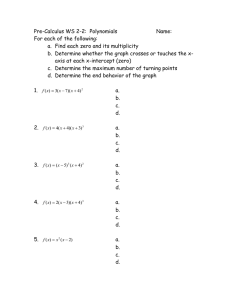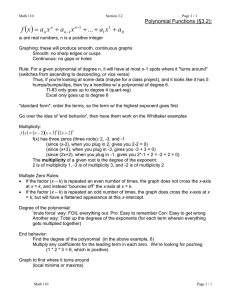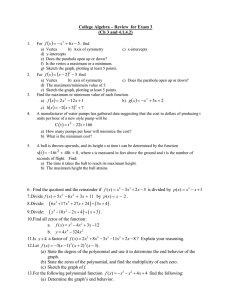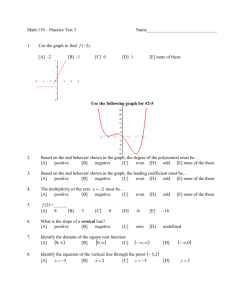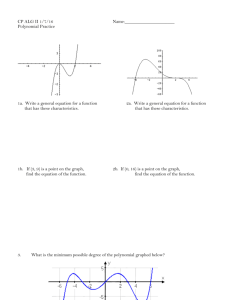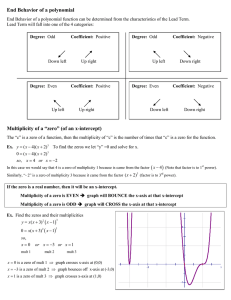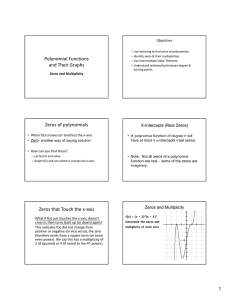4.3.2 Real Zeros of Polynomial Functions - Part II
advertisement
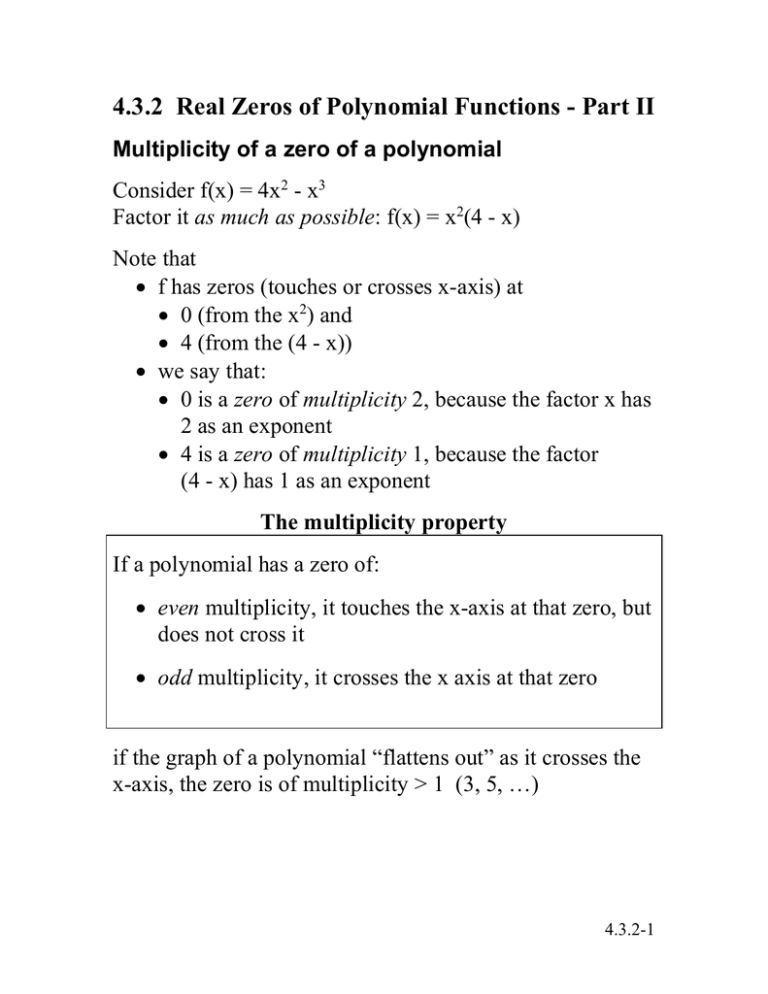
4.3.2 Real Zeros of Polynomial Functions - Part II Multiplicity of a zero of a polynomial Consider f(x) = 4x2 - x3 Factor it as much as possible: f(x) = x2(4 - x) Note that f has zeros (touches or crosses x-axis) at 0 (from the x2) and 4 (from the (4 - x)) we say that: 0 is a zero of multiplicity 2, because the factor x has 2 as an exponent 4 is a zero of multiplicity 1, because the factor (4 - x) has 1 as an exponent The multiplicity property If a polynomial has a zero of: even multiplicity, it touches the x-axis at that zero, but does not cross it odd multiplicity, it crosses the x axis at that zero if the graph of a polynomial “flattens out” as it crosses the x-axis, the zero is of multiplicity > 1 (3, 5, …) 4.3.2-1 Putting it all together Consider again: f(x) = 4x2 - x3 = x2(4 - x). by the polynomial tail principal, the tails of f (leading term -x3) rise on the left and fall on the right. its zeros are: 0 (multiplicity of 2) - touches x-axis there 4 (multiplicity 1) - crosses x-axis there just by plotting its zeros and noting their multiplicities, we can create a rough graph of f: left tail right tail Graph it on the graphing calculator, and see if this is (roughly) correct. 4.3.2-2
